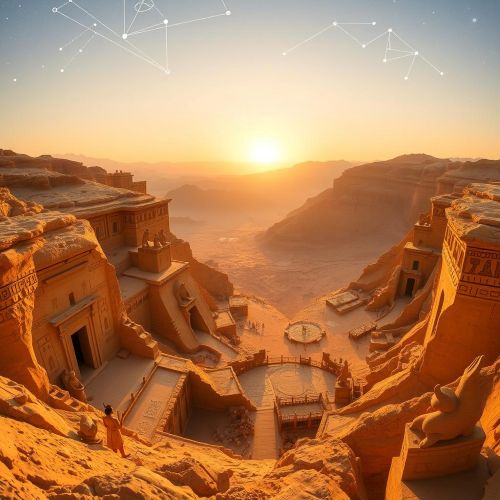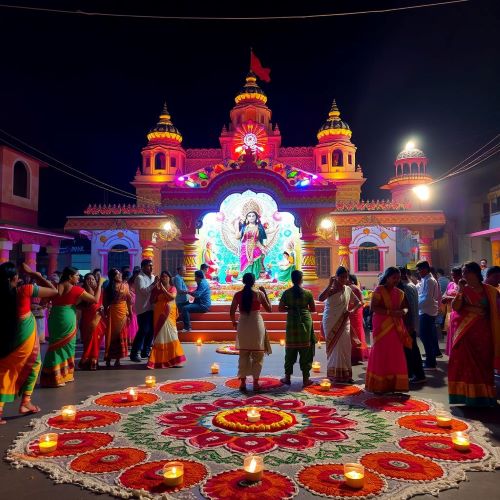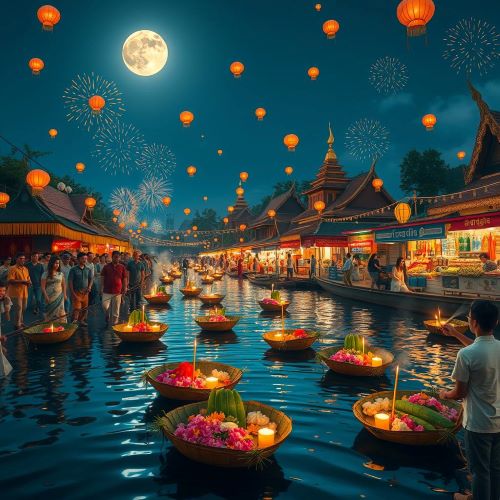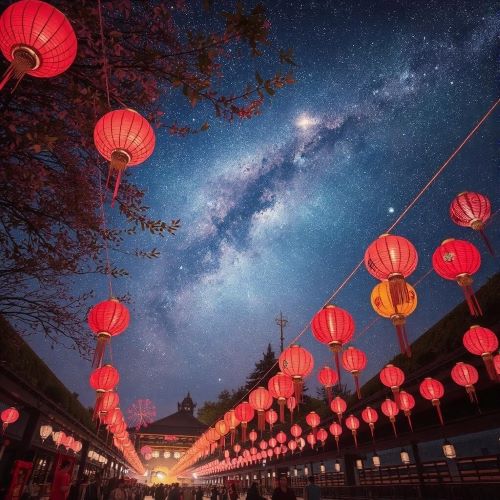Yamayaki : A Fiery Tradition
At a glance
| Description | |
|---|---|
| Location | Nara |
| Country | Japan |
| Dedicated To | Ancestors |
| Duration | 1 day |
| Time of Year | January |
Introduction
Yamayaki, meaning “mountain burning” in Japanese, is one of Nara’s most visually arresting and culturally meaningful annual traditions. Held on the fourth Saturday of January, the festival centers on the dramatic burning of Mount Wakakusa’s grassy slope. As night falls, the quiet winter sky bursts into life with flames and fireworks, transforming the cold landscape into a glowing tribute to renewal and community spirit. Unlike the moon-focused Mid-Autumn Festival common in other East Asian cultures, Yamayaki captures attention with its fiery symbolism and deep spiritual roots, making it a uniquely Japanese celebration of seasonal transition and purification.
Connection with Mythology
The Yamayaki Festival is steeped in legends and religious symbolism. One popular origin story points to an 18th-century land dispute between two of Nara’s most significant temples—Tōdai-ji and Kōfuku-ji—where the burning of the mountain may have been a dramatic resolution or warning. However, a more spiritual interpretation sees the fire as a ritual intended to calm restless spirits believed to inhabit Mount Wakakusa, especially those tied to the ancient burial mound, Uguisuzuka Kofun, at the mountain’s peak.
This spiritual motivation connects with ancient Shinto beliefs where fire is seen as a powerful purifier. In this context, setting the mountain ablaze is not merely ceremonial—it is an act of cleansing the land and appeasing the kami (deities or spirits). Similar to how the Mid-Autumn Festival celebrates the harvest and harmony under the full moon, Yamayaki expresses reverence through fire, linking the natural world with the spiritual realm and marking a symbolic fresh start.
Main Activities
The Yamayaki Festival features a series of carefully orchestrated activities that build anticipation and foster community involvement. The day begins with local events around the base of Mount Wakakusa, including a fun sembei (rice cracker) throwing contest, reflecting Nara’s association with deer and its local culture. This lighthearted tradition sets the stage for more solemn rituals to follow.
As the afternoon turns to dusk, a sacred fire is kindled at the historic Kasuga Taisha Shrine. This flame is carried in a formal procession by Shinto priests and local officials dressed in traditional attire. Their destination is Nogami Shrine at the base of the mountain, where prayers are offered for safety and peace. After the formal rites, a large bonfire is lit, and carefully managed teams, including local fire brigades, begin the controlled ignition of Mount Wakakusa’s slope.
To complement the dramatic visuals, a vibrant fireworks display precedes and sometimes accompanies the blaze. As flames consume the grassland, the night sky glows with warmth and spectacle, and spectators gather to witness a performance that is both visually stunning and spiritually resonant.
Importance in Cultural History
Yamayaki is more than just a celebration; it is a cultural artifact that reflects centuries of belief and community tradition. Its transformation from a localized temple dispute or spiritual rite into a widely recognized public event mirrors Japan’s broader historical fusion of Shinto and Buddhist practices. Fire, in this case, is both a literal and metaphorical tool—clearing the old to make way for the new.
Ecologically, the ritual burning also serves practical purposes. It acts as a controlled burn, removing dead grass and potential pests while preventing future wildfires. In doing so, it preserves the mountain’s natural beauty and maintains the balance of Nara’s landscape. Historically, such burns were essential for the longevity of Japan’s agrarian society and have now been incorporated into cultural tradition, demonstrating how environmental awareness was embedded in spiritual customs long before sustainability became a global concern.
Moreover, Yamayaki provides a moment of collective reflection and seasonal transition. Coming in the heart of winter, the fire offers warmth and hope, signaling the gradual approach of spring and a renewal of life cycles. This echoes Japan’s cultural emphasis on seasonality and impermanence—core themes in literature, art, and philosophy.
Need a place to stay? Book your hotel room now!
International Appeal
In recent years, Yamayaki has attracted increasing interest from international tourists and cultural enthusiasts. Its combination of ancient ritual, spectacular visuals, and community involvement creates a compelling narrative that resonates far beyond Japan’s borders. Visitors from around the world travel to Nara each year, drawn not only by the pyrotechnics but by the opportunity to engage with a living tradition deeply tied to place and history.
What enhances Yamayaki’s global appeal is its thematic universality. Just as the Mid-Autumn Festival is celebrated across China, Korea, and Vietnam for its shared values of unity and seasonal gratitude, Yamayaki’s themes of cleansing, spiritual renewal, and community togetherness find resonance in cultures worldwide. In an era where digital connection often eclipses physical ritual, festivals like Yamayaki serve as a powerful reminder of the value in gathering, observing, and celebrating nature’s rhythms.
Efforts to share the festival globally, such as live streaming, documentaries, and travel vlogs, have further boosted its recognition. Cultural tourism boards also promote Yamayaki as a key event, ensuring it remains a staple in international calendars for travelers interested in Japanese heritage. Importantly, Yamayaki’s environmentally conscious nature—the controlled burn being an eco-friendly tradition—also aligns with global sustainability conversations, making it not only a cultural treasure but a model of respectful ecological stewardship.
Source
Japan National Tourism Organization. (2020, December 14). Mt. Wakakusa Yamayaki | Travel Japan. https://www.japan.travel/en/spot/1007/
Sakuraco. (2023, July 27). Nara Japan and its Splendor of Mountain Burning Festivals. https://sakura.co/blog/nara-japan-and-its-splendor-of-mountain-burning-festivals?srsltid=AfmBOoqTA3iRwAM6cACsRZscm97K65UvcfG15IBCekzydXDfE-rloNsN
Japan Guide. (2024, December 20). Wakakusa Yamayaki – Nara Travel – Japan Guide. https://www.japan-guide.com/e/e4118.html
Waplus Nara. (2025, January 23). The Yamayaki (burning mountain) ritual on Mount Wakakusa. https://waplus-kimono.com/nara/en/blog/2025/01/23/the-yamayaki-burning-mountain-ritual-on-mount-wakakusa%F0%9F%8E%86/
Tandem. (2019, April 3). 8 Things You Need to Know about the Mid-Autumn Festival. https://tandem.net/blog/mid-autumn-festival
TIME. (2022, September 9). How Different Countries Celebrate the Mid-Autumn Festival. https://time.com/6212026/countries-celebrate-mid-autumn-festival/
Chinese Government. (2014, June 25). Mid-Autumn Festival. https://www.idcpc.org.cn/english2023/chinadelights/festivals/202307/t20230719_153348.html
Japan Travel. (2019, January 25). Wakakusa Yamayaki | FROSCH Travel. https://www.frosch.com/2019/01/25/wakakusa-yamayaki/
Sakuraco. (2023, July 27). Nara Japan and its Splendor of Mountain Burning Festivals. https://sakura.co/blog/nara-japan-and-its-splendor-of-mountain-burning-festivals?srsltid=AfmBOooRMgbOBKFRxxqOi7heWfttLnTpbsZJFYnwZWXgYHi_Q1OOLckW
Frequently Asked Questions
Lorem ipsum dolor sit amet, consectetur adipiscing?
Lorem ipsum dolor sit amet, consectetur adipiscing elit. Praesent convallis vestibulum justo, ac tincidunt nunc vehicula quis. Nullam id dolor quis orci malesuada feugiat. Curabitur aliquet libero at urna ullamcorper, ac ultricies nulla dapibus.
Lorem ipsum dolor sit amet, consectetur adipiscing?
Lorem ipsum dolor sit amet, consectetur adipiscing elit. Praesent convallis vestibulum justo, ac tincidunt nunc vehicula quis. Nullam id dolor quis orci malesuada feugiat. Curabitur aliquet libero at urna ullamcorper, ac ultricies nulla dapibus.
Lorem ipsum dolor sit amet, consectetur adipiscing?
Lorem ipsum dolor sit amet, consectetur adipiscing elit. Praesent convallis vestibulum justo, ac tincidunt nunc vehicula quis. Nullam id dolor quis orci malesuada feugiat. Curabitur aliquet libero at urna ullamcorper, ac ultricies nulla dapibus.
Lorem ipsum dolor sit amet, consectetur adipiscing?
Lorem ipsum dolor sit amet, consectetur adipiscing elit. Praesent convallis vestibulum justo, ac tincidunt nunc vehicula quis. Nullam id dolor quis orci malesuada feugiat. Curabitur aliquet libero at urna ullamcorper, ac ultricies nulla dapibus.
Lorem ipsum dolor sit amet, consectetur adipiscing?
Lorem ipsum dolor sit amet, consectetur adipiscing elit. Praesent convallis vestibulum justo, ac tincidunt nunc vehicula quis. Nullam id dolor quis orci malesuada feugiat. Curabitur aliquet libero at urna ullamcorper, ac ultricies nulla dapibus.








